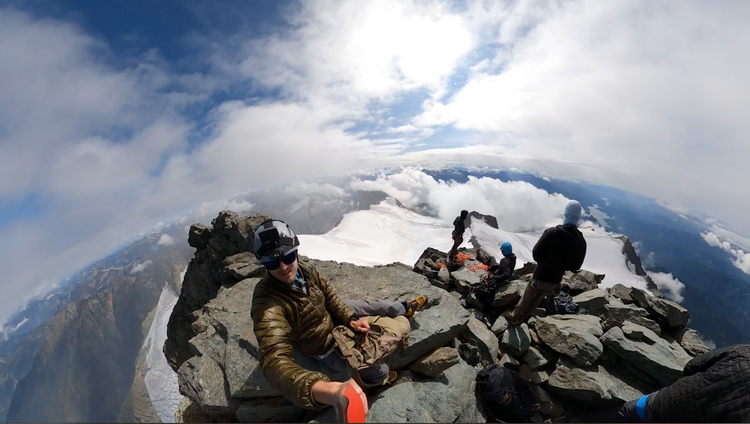Exploring the USS Midway
After seeing Top Gun: Maverick in San Diego at the biggest IMAX theater I could find, Dad and I visited the USS Midway to continue the theme. This gigantic decommissioned aircraft carrier is named for the historic US naval victory at Midway Island against the Empire of Japan in World War II. U.S. planes sank four Japanese aircraft carriers in the span of a few days in June, 1942 and turned the tide decisively in the Pacific theater. At the time it steamed out of the shipyard, the Midway was the largest ship in the world and held the title until 1955. It is also the longest-serving aircraft carrier of the 20th century—1945-1992.
The tour starts after you climb the stairs and enter the hangar bay, which is an enormous metal cavern housing aircraft from nearly every generation. The Douglas Dauntless dive-bomber is the first plane next to the entrance to the hangar deck. Its prominent location I can only assume is because it’s the plane type responsible for sinking those four Japanese carriers. As you continue, you pass by the heavyweights of naval aviation history: the TBM Avenger, F4F Wildcat, the Texan, A-1 Skyraider, and others.
Dad and I immediately gravitated to the line for the disembodied F-14 Tomcat cockpit. The whole museum was slammed with people for the Memorial Day weekend, but we felt we had to weather the crowds because we were so hopped up on Top Gun thrills. Inside the old Tomcat, we took turns pretending to be Maverick and Goose. All the surfaces were pretty grimy from thousands of gross kid hands, but it felt righteous all the same.
We headed up to the flight deck and strolled around the jets arranged along the length of the ship. We encountered some we’d never heard of before, like the RA-5 Vigilante, a nuclear bomber turned reconnaissance jet from the Vietnam era, and the F9F Panther, a carrier-based Korean War-era fighter. Beside a full-sized Hawkeye was another cockpit chopped off from some decommissioned E-2. Dad and I clambered in and tried once more tried to imagine landing on a carrier. It was a little disconcerting that we couldn’t see any obvious way to eject.
One of the docents recommended we grab a tour of the island before the crowds swallowed it up and created a huge wait. We hitched onto a tour group and followed our guides, all former servicemen in the Navy or the Coast Guard, around the labyrinthian structure. It’s astounding the amount of stuff the Navy figured out how to cram in such a compact metal box.
After we weaved our way through the tiny metal doors and descended the impossibly steep stairs out of the island, Dad and I visited some of the jets we’d missed before on our first pass. My father flew both the F-4 and the F-15E during his Air Force career and he explained the various munitions, like the Mark-82 500lb bomb and the AIM-9 Sidewinder, along with design details on the carrier's resident F-4.
After we had our fill of the flight deck, we decided to make the loop through the Combat Information Center and the squadron ready rooms in the bowels of the ship.
Someone in the museum administration really likes to use creepy full-size dummies dressed as crew to give some better sense of what life was like on the carrier. But all I could think about was how eerie this whole place must be at night when the crowds are gone and it’s just these weird dolls inhabiting the silent darkness.




